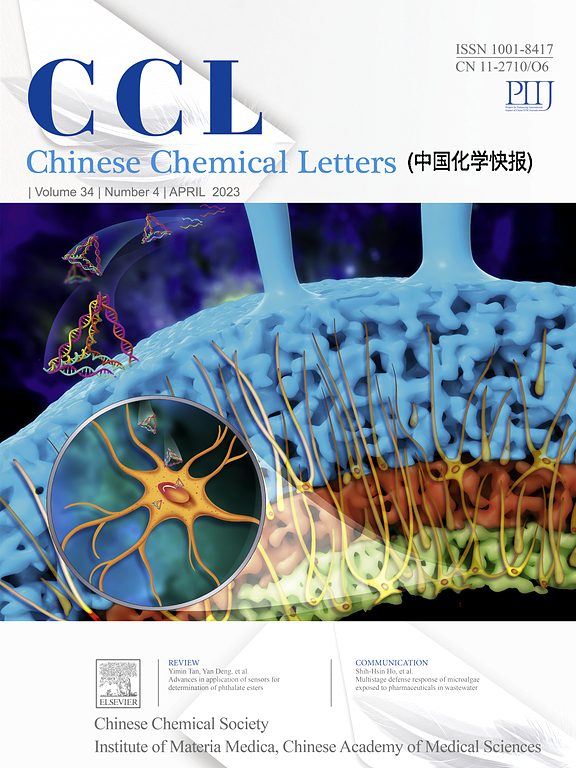利用磁铁将磁性 BDD 粒子吸引到 Ti/RuO2-IrO2 上:用于电化学氧化废水处理的新型 2.5 维电极
IF 9.4
1区 化学
Q1 CHEMISTRY, MULTIDISCIPLINARY
引用次数: 0
摘要
掺硼金刚石(BDD)是一种著名的阳极材料,在电化学氧化废水处理中具有很强的污染物降解能力。然而,BDD 膜的生产成本和机械强度仍不能令人满意。从工业废料中提取的磁性 BDD 颗粒可能是 BDD 膜的一种有前途的替代材料,但将这些颗粒组装成可用的电极仍是一项挑战。在本研究中,磁性 BDD 粒子被磁铁吸引到 Ti/RuO2-IrO2 电极上,从而构成了新型 2.5 维(2.5D)电极。为了确定新型电极的结构-活性关系,研究人员进行了基本表征、多物理场模拟、污染物降解和电合成实验。结果表明,适量的 BDD 粒子(0.1 克/平方厘米)可使活性位点数量增加约 20%。在降解偶氮染料、对苯醌、琥珀酸和四种实际废水等多种污染物以及甘油转化过程中,Ti/RuO2-IrO2 与 BDD 粒子之间产生了很强的协同效应。研究发现,Ti/RuO2-ArO2 和 BDD 粒子界面上的联合活性位点以及 BDD 粒子内部的活性位点对污染物的矿化和增值产品的生成至关重要。BDD 粒子的最佳用量(0.1 克/平方厘米)足以保留联合活性位点,并在 BDD 粒子上保持足够的极化。然而,当 BDD 粒子的装载量增加(0.3 克/平方厘米)时,2.5D 电极的混合特性就会减弱。本文章由计算机程序翻译,如有差异,请以英文原文为准。

Attracting magnetic BDD particles onto Ti/RuO2-IrO2 by using a magnet: A novel 2.5-dimensional electrode for electrochemical oxidation wastewater treatment
Boron-doped diamond (BDD) is a well-known anode material with a high pollutant degradation ability for electrochemical oxidation wastewater treatment. Nevertheless, the cost of production and mechanical strength of BDD membranes remain unsatisfactory. Magnetic BDD particles derived from industrial waste may represent a promising alternative to BDD membranes, although the challenge remains in assembling these particles into a usable electrode. In this study, magnetic BDD particles were attracted to a Ti/RuO2-IrO2 electrode using a magnet, thus constituting a novel 2.5-dimensional (2.5D) electrode. To ascertain the structure-activity relationship of the novel electrode, essential characterizations, multi-physics simulations, pollutant degradation and electrosynthesis experiments were conducted. The results indicate that an appropriate quantity of BDD particles (0.1 g/cm2) can enhance the number of active sites by approximately 20%. A strong synergistic effect was observed between the Ti/RuO2-IrO2 and BDD particles in the degradation of various pollutants, including azo dye, p-benzoquinone, succinic acid and four kinds of real wastewaters, as well as glycerol conversion. The joint active sites on the interface between Ti/RuO2-IrO2 and BDD particles, as well as the inner active sites on BDD particles, have been identified as crucial in the mineralization of pollutants and the generation of value-added products. The optimal amount of BDD particles (0.1 g/cm2) is sufficient to preserve the joint active sites and to maintain an adequate polarization on the BDD particles. Nevertheless, the hybrid feature of the 2.5D electrode is diminished when a greater quantity of BDD particles (0.3 g/cm2) is loaded.
求助全文
通过发布文献求助,成功后即可免费获取论文全文。
去求助
来源期刊

Chinese Chemical Letters
化学-化学综合
CiteScore
14.10
自引率
15.40%
发文量
8969
审稿时长
1.6 months
期刊介绍:
Chinese Chemical Letters (CCL) (ISSN 1001-8417) was founded in July 1990. The journal publishes preliminary accounts in the whole field of chemistry, including inorganic chemistry, organic chemistry, analytical chemistry, physical chemistry, polymer chemistry, applied chemistry, etc.Chinese Chemical Letters does not accept articles previously published or scheduled to be published. To verify originality, your article may be checked by the originality detection service CrossCheck.
 求助内容:
求助内容: 应助结果提醒方式:
应助结果提醒方式:


